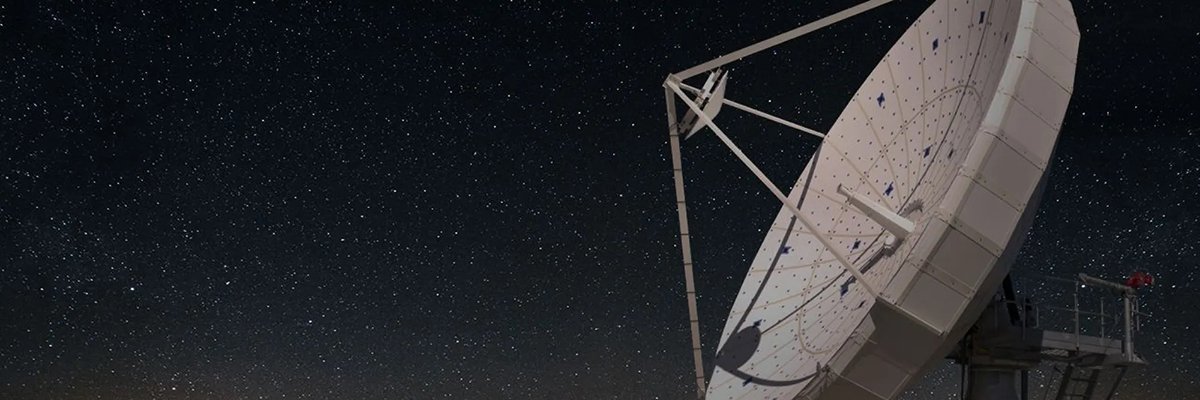Tech
Viasat unveils smartphone connectivity via satellite first in Mexico | Computer Weekly

Deploying networks based on satellites to offer communications mobile devices has been one of the key trends of 2025, and in what is seen as an in-country first of its kind, Viasat has completed a direct-to-device (D2D) demonstration in Mexico, featuring native SMS messages on a standard smartphone.
Viasat regards D2D as an emerging technology that allows everyday devices such as mobile phones to connect to satellites without the need for dedicated satellite hardware. The technology follows global mobile 3GPP release 17 standards, which are being adopted by satellite operators, mobile network operators, and handset and chipset manufacturers.
The demonstration showcased smartphones sending and receiving messages over Viasat’s I-4 F3 satellite using 3GPP non-terrestrial network (NTN) standards. In a country-first, native SMS messages were shared across two mass-market Android smartphones, with one connected via satellite and the other to a traditional cellular network. Viasat also demonstrated satellite connectivity – including SMS and push-to-talk capabilities – using the HMD Offgrid, a companion device and the Bullitt application.
All messages were sent and received using Viasat’s global, L-band satellite capabilities, enabled by 3GPP standards-based NTN RAN and Core infrastructure from Skylo, a Viasat ecosystem partner. Skylo uses dedicated, licensed mobile satellite spectrum for connectivity that avoids network interference with terrestrial signals, and ensures ubiquitous coverage for customers in rural or rugged areas.
Viasat said the demos represent a showcase of satellite to cell phone connectivity feasibility in the country after already having completed successful D2D demonstrations in India, the Middle East, Brazil and Hawaii. The company sees its approach of using already-licensed and dedicated satellite spectrum as allowing it to work with mobile network operators to provide services in the future, without sacrificing or interfering with terrestrial networks.
“Expanding our D2D innovation to Mexico demonstrates the potential it holds for the entire region,” said Hector Rivero, general manager of Viasat Mexico. “This technology has the ability to bridge the connectivity gap in areas where traditional services are unreliable or non-existent, opening up possibilities for millions of individuals and devices to connect through satellite.
“We are confident that this will have significant advantages for consumers and various industries worldwide, and we are thrilled to collaborate with our partners to bring it to fruition. Through this, we remain dedicated to our mission of connecting the unconnected.”
Viasat believes it can play a key role in advancing open architecture standards-based D2D connectivity as a founding member of the Mobile Satellite Services Association, a non-profit organisation designed to bring together a range of industry players to promote mobile satellite connectivity.
In addition, in September 2025, Viasat also announced it was working with UAE-based artificial intelligence-powered space tech company Space42 to form Equatys, a jointly held entity, to enable global D2D services and evolving existing and planned mobile satellite services to a 5G network environment.
Equatys is expected to unite satellite and terrestrial networks using a 3GPP NTN Release-compliant platform accessible to standard smartphones and internet of things devices, extending service to billions of people and devices worldwide.
Anticipated to be capable of supporting well over 100 MHz of harmonised MSS spectrum already allocated across more than 160 markets, the venture is expected to establish a foundation for reliable global communications, with commercial roll-out targeted within three years.
Tech
Gravel Running Shoes Are the Best Suitcase Shoe

“In general, we are noticing many of these shoes have more of a road running influence than they do trail,” says Bodin. “So, there will be a mix of foams, midsole geometries, less attention to fit, and a more subtle outsole pattern compared to trail shoes.”
What Are the Benefits of Gravel Shoes?
In a word: versatility. You can lace up a gravel shoe at home with confidence that they’ll handle whatever lies ahead, provided you’re not hitting a really technical trail or ankle-deep mud.
“Many of the shoes in this category can run well on roads, gravel paths, and light trails,” says Bodin. “That’s not something that very many strictly road shoes or dedicated trail shoes can do.”
The more rockered midsoles aim to smooth your heel-to-toe transitions, cutting the calf muscle fatigue over uneven ground and on longer runs. They’re also often lighter than technical trail shoes, thanks to the smaller lugs, less pronounced rock plates, and lower levels of upper reinforcement. That serves up more agility than heftier trail shoes, so you can move faster and lighter over runnable ground.
Do Gravel Shoes Feel Different From “Regular” Trail Shoes?
“Yes and no,” says Bodin. A lot depends on the brand. Some companies, like Craft, have many gravel-specific options. Others, like Salomon and Hoka, use their redesigned road running shoes for their gravel category.
Gravel shoes also have limits, warns Bodin. “In my experience, most gravel shoes will be limited when they reach a moderately technical trail-running scenario. Again, because the bulk of the gravel shoe experience is focused on the overall ride on smoother terrain, performance declines when there are more turns or more challenging terrain with rocks and roots.”
Do You Really Need a Gravel Shoe?
Like everything in running shoe world, that depends. There are trail shoes out there with the chops to conquer everything from technical to more runnable terrain, like the Hoka Speedgoat 6 ($125). Some of the pricier trail shoes like the North Face Vectiv Pro 3 ($250) pair modified versions of their springy road-shoe foams with carbon plates to deliver bouncier rides that don’t feel out of place on the road. I’ve tested loads of these shoes, and some top-tier trail shoes run better on the road than cheaper road shoes.
However, if you regularly tackle firmer, less technical mixed terrain on your runs, generally in drier conditions—and rarely venture onto more technical trails—there’s a good case for investing in a gravel shoe. It’ll carry you happily from road to trail and back again, and even cover your road runs on the way to the trail.
Likewise, if you’re a newcomer to trail running, a gravel shoe could be a good halfway house as you transition from the asphalt to the single track, thanks to a ride which retains some road-shoe familiarity. They’re also an excellent suitcase shoe—if you’re traveling and you can only fit one shoe in your luggage, the versatility of a gravel shoe makes it a great choice.
Tech
This AI Model Can Intuit How the Physical World Works

The original version of this story appeared in Quanta Magazine.
Here’s a test for infants: Show them a glass of water on a desk. Hide it behind a wooden board. Now move the board toward the glass. If the board keeps going past the glass, as if it weren’t there, are they surprised? Many 6-month-olds are, and by a year, almost all children have an intuitive notion of an object’s permanence, learned through observation. Now some artificial intelligence models do too.
Researchers have developed an AI system that learns about the world via videos and demonstrates a notion of “surprise” when presented with information that goes against the knowledge it has gleaned.
The model, created by Meta and called Video Joint Embedding Predictive Architecture (V-JEPA), does not make any assumptions about the physics of the world contained in the videos. Nonetheless, it can begin to make sense of how the world works.
“Their claims are, a priori, very plausible, and the results are super interesting,” says Micha Heilbron, a cognitive scientist at the University of Amsterdam who studies how brains and artificial systems make sense of the world.
Higher Abstractions
As the engineers who build self-driving cars know, it can be hard to get an AI system to reliably make sense of what it sees. Most systems designed to “understand” videos in order to either classify their content (“a person playing tennis,” for example) or identify the contours of an object—say, a car up ahead—work in what’s called “pixel space.” The model essentially treats every pixel in a video as equal in importance.
But these pixel-space models come with limitations. Imagine trying to make sense of a suburban street. If the scene has cars, traffic lights and trees, the model might focus too much on irrelevant details such as the motion of the leaves. It might miss the color of the traffic light, or the positions of nearby cars. “When you go to images or video, you don’t want to work in [pixel] space because there are too many details you don’t want to model,” said Randall Balestriero, a computer scientist at Brown University.
Tech
Security News This Week: Oh Crap, Kohler’s Toilet Cameras Aren’t Really End-to-End Encrypted

An AI image creator startup left its database unsecured, exposing more than a million images and videos its users had created—the “overwhelming majority” of which depicted nudes and even nude images of children. A US inspector general report released its official determination that Defense Secretary Pete Hegseth put military personnel at risk through his negligence in the SignalGate scandal, but recommended only a compliance review and consideration of new regulations. Cloudflare’s CEO Matthew Prince told WIRED onstage at our Big Interview event in San Francisco this week that his company has blocked more than 400 billion AI bot requests for its customers since July 1.
A new New York law will require retailers to disclose if personal data collected about you results in algorithmic changes to their prices. And we profiled a new cellular carrier aiming to offer the closest thing possible to truly anonymous phone service—and its founder, Nicholas Merrill, who famously spent a decade-plus in court fighting an FBI surveillance order targeted at one of the customers of his internet service provider.
Putting a camera-enabled digital device in your toilet that uploads an analysis of your actual bodily waste to a corporation represents such a laughably bad idea that, 11 years ago, it was the subject of a parody infomercial. In 2025, it’s an actual product—and one whose privacy problems, despite the marketing copy of the company behind it, have turned out to be exactly as bad as any normal human might have imagined.
Security researcher Simon Fondrie-Teitler this week published a blog post revealing that the Dekota, a camera-packing smart device sold by Kohler, does not in fact use “end-to-end encryption” as it claimed. That term typically means that data is encrypted so that only user devices on either “end” of a conversation can decrypt the information therein, not the server that sits in between them and hosts that encrypted communication. But Fondrie-Teitler found that the Dekota only encrypts its data from the device to the server. In other words, according to the company’s definition of end-to-end encryption, one end is essentially—forgive us—your rear end, and the other is Kohler’s backend, where the images of its output are “decrypted and processed to provide our service,” as the company wrote in a statement to Fondrie-Teitler.
In response to his post pointing out that this is generally not what end-to-end encryption means, Kohler has removed all instances of that term from its descriptions of the Dekota.
The cyberespionage campaign known as Salt Typhoon represents one of the biggest counterintelligence debacles in modern US history. State-sponsored Chinese hackers infiltrated virtually every US telecom and gained access to the real-time calls and texts of Americans—including then presidential and vice-presidential candidates Donald Trump and J.D. Vance. But according to the Financial Times, the US government has declined to impose sanctions on China in response to that hacking spree amid the White House’s effort to reach a trade deal with China’s government. That decision has led to criticism that the administration is backing off key national security initiatives in an effort to accommodate Trump’s economic goals. But it’s worth noting that imposing sanctions in response to espionage has always been a controversial move, given that the United States no doubt carries out plenty of espionage-oriented hacking of its own across the world.
As 2025 draws to a close, the nation’s leading cyberdefense agency, the Cybersecurity and Infrastructure Agency (CISA), still has no director. And the nominee to fill that position, once considered a shoo-in, now faces congressional hurdles that may have permanently tanked his chances to run the agency. Sean Plankey’s name was excluded from a Senate vote Thursday on a panel of appointments, suggesting his nomination may be “over,” according to CyberScoop. Plankey’s nomination had faced various opposition from senators on both sides of the aisle with a broad mix of demands: Florida’s Republican senator Rick Scott had placed a hold on his nomination due to the Department of Homeland Security (DHS) terminating a Coast Guard contract with a company in his state, while North Carolina’s GOP senators opposed any new DHS nominees until disaster relief funding was allocated to their state. Democratic senator Ron Wyden, meanwhile, has demanded CISA publish a long-awaited report on telecom security prior to his appointment, which still has yet to be released.
The Chinese hacking campaign centered around the malware known as “Brickstorm” first came to light in September, when Google warned that the stealthy spy tool has been infecting dozens of victim organizations since 2022. Now CISA, the National Security Agency, and the Canadian Centre for Cybersecurity jointly added to Google’s warnings this week in an advisory about how to spot the malware. They also cautioned that the hackers behind it appear to be positioned not only for espionage targeting US infrastructure but also potentially disruptive cyberattacks, too. Most disturbing, perhaps, is a particular data point from Google, measuring the average time until the Brickstorm breaches have been discovered in a victim’s network: 393 days.
-

 Tech7 days ago
Tech7 days agoGet Your Steps In From Your Home Office With This Walking Pad—On Sale This Week
-

 Sports6 days ago
Sports6 days agoIndia Triumphs Over South Africa in First ODI Thanks to Kohli’s Heroics – SUCH TV
-

 Entertainment6 days ago
Entertainment6 days agoSadie Sink talks about the future of Max in ‘Stranger Things’
-

 Fashion6 days ago
Fashion6 days agoResults are in: US Black Friday store visits down, e-visits up, apparel shines
-

 Politics6 days ago
Politics6 days agoElon Musk reveals partner’s half-Indian roots, son’s middle name ‘Sekhar’
-

 Tech6 days ago
Tech6 days agoPrague’s City Center Sparkles, Buzzes, and Burns at the Signal Festival
-

 Sports6 days ago
Sports6 days agoBroncos secure thrilling OT victory over Commanders behind clutch performances
-

 Entertainment6 days ago
Entertainment6 days agoNatalia Dyer explains Nancy Wheeler’s key blunder in Stranger Things 5






